How to grow hotter peppers takes center stage, beckoning you into a world of fiery flavor and vibrant gardens. Growing these spicy gems is a rewarding experience, allowing you to enjoy the heat and unique flavors of your own homegrown peppers.
From selecting the right variety to harvesting and storing, this guide provides a comprehensive roadmap to cultivating your own personal pepper paradise.
Imagine the satisfaction of biting into a fiery jalapeño you nurtured from seed, or the thrill of crafting your own fiery hot sauce with habaneros you painstakingly cultivated. Growing hot peppers isn’t just about the spice; it’s about connecting with nature, learning about different varieties, and experiencing the joy of bringing a touch of heat to your culinary creations.
Choosing the Right Pepper Variety
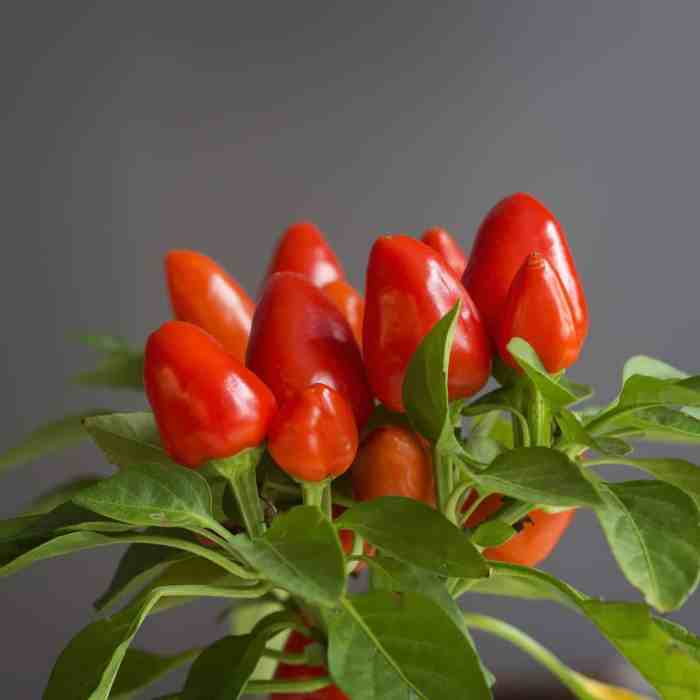
The first step to growing hotter peppers is selecting the right variety. With a wide array of choices available, understanding the different types and their characteristics is crucial for a successful and satisfying pepper-growing experience.
The Scoville Heat Unit (SHU) Scale
The Scoville Heat Unit (SHU) scale is a measurement system used to quantify the perceived heat or spiciness of chili peppers. Developed by American pharmacist Wilbur Scoville in 1912, the scale uses a subjective method to determine the relative heat of different peppers.
The SHU scale is based on the amount of capsaicinoids, the chemical compounds responsible for the burning sensation, present in a pepper.
A pepper’s SHU rating is determined by diluting its extract in a sugar solution until the heat is no longer detectable by a panel of tasters. The higher the dilution required, the hotter the pepper.
Popular Hot Pepper Varieties
The following table provides a list of popular hot pepper varieties with their SHU ratings and unique flavor profiles:
| Pepper Variety | SHU Rating | Flavor Profile |
|---|---|---|
| Bell Pepper | 0 SHU | Sweet and mild |
| Jalapeño | 2,500-8,000 SHU | Fruity, slightly sweet, with a lingering heat |
| Habanero | 100,000-350,000 SHU | Citrusy, fruity, with a powerful, long-lasting heat |
| Ghost Pepper | 855,000-1,041,427 SHU | Fruity, smoky, with an intense, lingering heat |
| Carolina Reaper | 1,569,300-2,200,000 SHU | Fruity, with a powerful, long-lasting heat |
Types of Hot Peppers
Hot peppers are classified into various types based on their size, shape, color, and heat level.
- Bell Peppers: These are the mildest peppers, with a sweet and fruity flavor. They come in various colors, including red, green, yellow, and orange.
- Jalapeños: These are small, cone-shaped peppers with a moderate heat level and a slightly sweet, fruity flavor. They are commonly used in Mexican cuisine.
- Habaneros: These are small, lantern-shaped peppers with a very high heat level and a citrusy, fruity flavor. They are often used in Caribbean and South American cuisines.
- Ghost Peppers: These are large, wrinkled peppers with an extremely high heat level and a fruity, smoky flavor. They are considered one of the hottest peppers in the world.
Choosing the Right Pepper Variety for You
When selecting a pepper variety, consider the following factors:
- Desired Heat Level: Start with a milder variety if you are new to hot peppers and gradually work your way up to hotter peppers as you develop a tolerance.
- Flavor Profile: Consider the flavor profile you are looking for. Some peppers are fruity, while others are smoky or earthy.
- Growing Conditions: Different pepper varieties have different growing requirements. Choose varieties that are well-suited to your climate and growing conditions.
Understanding Growing Conditions
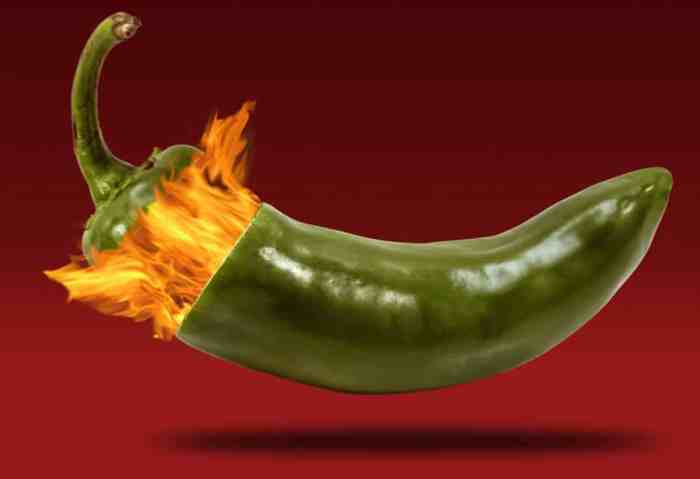
Hot peppers, like all plants, thrive in specific conditions. Understanding these requirements will ensure your peppers flourish and produce a bountiful harvest. Let’s delve into the key aspects of providing the ideal environment for your hot pepper plants.
Temperature and Sunlight
Hot peppers are warm-season crops, requiring consistent warmth to germinate, grow, and produce fruit. They thrive in temperatures between 70-90°F (21-32°C). However, they can tolerate a wider range, with some varieties even tolerating cooler temperatures. Sunlight is crucial for pepper growth.
Hot peppers require at least 6 hours of direct sunlight daily. They benefit from full sun exposure, which encourages vigorous growth and abundant fruit production. In areas with less sunlight, choose a location that receives at least 6 hours of indirect sunlight.
Growing hotter peppers is all about finding the right balance of heat and flavor. You’ll need to make sure your soil is well-drained, and that you have plenty of sunshine. But before you even start planting, you might want to check your hose for leaks – a leaky hose can waste water and make it harder to keep your plants hydrated.
If you’re dealing with a leaky faucet, you can find some great tips on how to stop a hose from leaking at the faucet. Once you’ve got your watering sorted out, you can focus on the fun part: choosing the hottest peppers you can find and enjoying the spicy rewards of your hard work!
Soil Requirements
Well-drained soil is essential for hot peppers. These plants are sensitive to overwatering and can suffer from root rot if the soil remains soggy. Well-drained soil allows excess water to drain away, preventing waterlogging and promoting healthy root development.
Preparing the Soil
Before planting your hot peppers, prepare the soil to ensure optimal growing conditions. Here are some tips for preparing the soil:
- Test the soil pH: Hot peppers prefer slightly acidic soil with a pH of 6.0-6.5. If your soil’s pH is outside this range, amend it with lime (to increase pH) or sulfur (to decrease pH) to bring it within the ideal range.
Growing hotter peppers is all about patience and understanding the nuances of heat tolerance. Just like with any plant, you need to provide the right environment and care for them to thrive. And just like learning how to grow floribunda roses , it’s about understanding the plant’s needs and providing them with what they need to flourish.
For peppers, that means plenty of sunlight, well-draining soil, and consistent watering.
- Amend with compost or fertilizer: Adding compost or fertilizer improves soil fertility and provides essential nutrients for pepper growth. Compost enriches the soil with organic matter, improves drainage, and encourages beneficial microbial activity. Fertilizers provide specific nutrients like nitrogen, phosphorus, and potassium, which are vital for healthy plant growth and fruit production.
- Loosen the soil: Loosening the soil improves drainage and allows roots to grow freely. Use a garden fork or tiller to break up compacted soil and create a loose, workable texture.
Raised Beds and Containers
Raised beds and containers offer several advantages for growing hot peppers.
- Improved Drainage: Raised beds and containers provide better drainage than in-ground planting. This is especially beneficial for areas with heavy clay soil or poor drainage.
- Control Over Soil Conditions: Raised beds and containers allow you to create a customized growing environment. You can use a specific soil mix tailored to your peppers’ needs and control the amount of water and nutrients they receive.
- Pest and Disease Management: Raised beds and containers can help prevent the spread of pests and diseases. The elevated position and contained environment can make it more difficult for pests and diseases to reach your plants.
- Space Optimization: Raised beds and containers are ideal for small gardens or areas with limited space. They allow you to grow your peppers vertically, maximizing your growing area.
Planting and Seed Starting
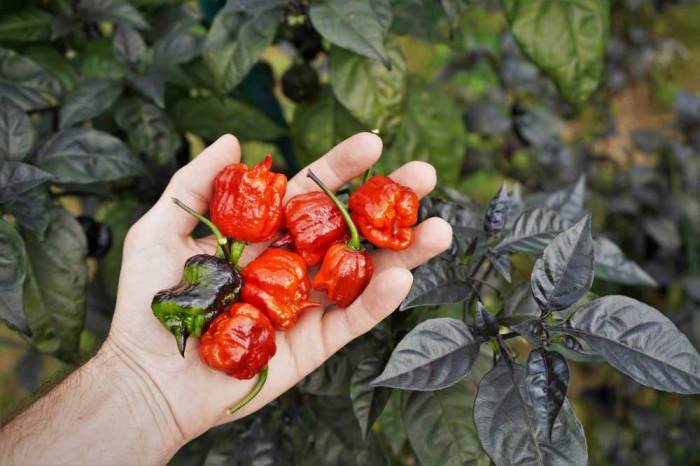
Starting your hot pepper seeds is a rewarding way to ensure a successful harvest. Whether you opt for starting them indoors or directly in the garden, proper techniques are crucial for healthy and vigorous growth.
Starting Seeds Indoors
Starting hot pepper seeds indoors allows you to get a head start on the growing season. This method is particularly beneficial in areas with shorter growing seasons or colder climates.
- Select the right seed starting mix:A seed starting mix is specifically designed for starting seeds indoors. It is a lightweight and airy mix that provides excellent drainage and aeration for young seedlings.
- Choose appropriate seed trays or pots:Seed trays with individual cells are ideal for starting seeds, as they prevent root disturbance during transplanting. Alternatively, you can use small pots (2-3 inches in diameter) for each seedling.
- Sow the seeds:Fill the seed trays or pots with the seed starting mix, moisten it thoroughly, and make a shallow indentation (about 1/4 inch deep) for each seed. Gently place one seed in each indentation, cover it with soil, and water lightly.
- Provide warmth and humidity:Hot pepper seeds germinate best at temperatures between 70-85 degrees Fahrenheit (21-29 degrees Celsius). You can use a heating mat to maintain the ideal temperature. To increase humidity, cover the seed trays or pots with a plastic dome or wrap.
- Maintain adequate light:Once the seedlings emerge, they require bright, indirect light. Place the trays or pots near a sunny window or under a grow light.
- Thin the seedlings:When the seedlings have a few true leaves, thin them out, leaving the strongest seedling in each cell or pot. This ensures adequate space for each seedling to grow.
Starting Seeds Directly in the Garden
Direct sowing hot pepper seeds in the garden is a simpler method, but it requires warmer temperatures and a longer growing season.
- Wait for warm soil:Hot pepper seeds need warm soil temperatures (at least 70 degrees Fahrenheit or 21 degrees Celsius) to germinate. Wait until the soil has warmed up sufficiently, usually after the last frost.
- Prepare the soil:Amend the soil with compost or other organic matter to improve drainage and fertility.
- Sow the seeds:Make shallow furrows (about 1/2 inch deep) in the soil, spacing them 12-18 inches apart. Plant the seeds 1-2 inches apart in the furrows.
- Water regularly:Keep the soil consistently moist but not soggy. Water deeply and infrequently to encourage deeper root growth.
Watering and Providing Light
Consistent watering and adequate light are crucial for healthy hot pepper seedlings.
- Water when the soil is dry:Allow the top inch of soil to dry out between waterings. Overwatering can lead to root rot and fungal diseases.
- Use a watering can with a fine rose:This helps to avoid disturbing the delicate seedlings.
- Provide bright, indirect light:Hot pepper seedlings need at least 6 hours of sunlight per day. If you are starting them indoors, supplement natural light with grow lights.
- Rotate the seedlings:Rotate the seed trays or pots regularly to ensure even growth and prevent them from leaning towards the light source.
Transplanting Seedlings Outdoors
When the seedlings have developed several true leaves and the soil temperature is consistently warm, it’s time to transplant them outdoors.
- Harden off the seedlings:Gradually acclimate the seedlings to outdoor conditions by placing them outside for a few hours each day, increasing the time gradually over a week. This helps them adjust to the sun, wind, and temperature changes.
- Prepare the planting site:Amend the soil with compost or other organic matter to improve drainage and fertility.
- Dig planting holes:Dig planting holes that are twice as wide and as deep as the root ball of the seedlings.
- Water the seedlings thoroughly:Water the seedlings thoroughly before transplanting to reduce stress.
- Gently remove the seedlings:Gently remove the seedlings from their seed trays or pots, being careful not to damage the roots.
- Place the seedlings in the planting holes:Place the seedlings in the planting holes, ensuring the top of the root ball is level with the soil surface.
- Backfill the holes with soil:Backfill the holes with soil, gently firming it around the roots.
- Water thoroughly:Water the newly transplanted seedlings thoroughly to help them settle in.
Watering and Fertilizing
Hot peppers are thirsty plants and require consistent watering to thrive. They also need nutrients to support vigorous growth and abundant fruit production. Understanding the proper watering and fertilizing techniques is crucial for successful hot pepper cultivation.
Watering Frequency and Amount
The frequency and amount of water your hot pepper plants need will vary depending on the stage of growth, climate, and soil type. Generally, newly planted seedlings require more frequent watering than established plants. During the flowering and fruiting stages, water requirements increase significantly.
- Seedlings:Water seedlings daily, ensuring the soil is consistently moist but not soggy.
- Established Plants:Once plants are established, water them deeply but less frequently. Allow the top inch of soil to dry out between waterings.
- Flowering and Fruiting:During these stages, water deeply every 2-3 days, or more frequently in hot, dry weather.
Monitoring Soil Moisture
It’s essential to monitor soil moisture levels to ensure your plants are getting the right amount of water.
- Finger Test:Insert your finger about an inch into the soil. If the soil feels dry, it’s time to water.
- Moisture Meter:Use a soil moisture meter to measure the moisture content in the soil.
Signs of Overwatering and Underwatering
Overwatering and underwatering can both negatively impact your hot pepper plants. Recognizing the signs of each can help you adjust your watering practices accordingly.
Overwatering
- Yellowing Leaves:Overwatering can lead to nutrient deficiencies, causing leaves to turn yellow.
- Wilting:Paradoxically, overwatering can also cause wilting as roots become suffocated and unable to absorb water.
- Stunted Growth:Overwatered plants may experience stunted growth due to root damage.
Underwatering
- Wilting:The most obvious sign of underwatering is wilting leaves.
- Dry Soil:The soil around the plant will be dry to the touch.
- Leaf Drop:Severely underwatered plants may drop leaves to conserve water.
Fertilizing Hot Peppers
Hot peppers are heavy feeders and require regular fertilization to thrive. You can use organic or synthetic fertilizers to provide the nutrients your plants need.
Organic Fertilizers
- Compost:A rich source of nutrients and beneficial microorganisms.
- Manure:Provides nitrogen, phosphorus, and potassium.
- Fish Emulsion:A liquid fertilizer rich in nitrogen and phosphorus.
Synthetic Fertilizers
- Balanced Fertilizer:A fertilizer with equal parts nitrogen (N), phosphorus (P), and potassium (K) is a good general-purpose choice.
- Tomato Fertilizer:Formulated specifically for tomato and pepper plants, containing higher levels of phosphorus and potassium.
Fertilizing Schedule
- Seedlings:Fertilize seedlings with a diluted solution of liquid fertilizer every 2-3 weeks.
- Established Plants:Fertilize established plants every 2-4 weeks during the growing season.
- Flowering and Fruiting:Increase the frequency of fertilization to every 1-2 weeks during the flowering and fruiting stages.
Note:Always follow the manufacturer’s instructions for the specific fertilizer you are using. Overfertilizing can damage your plants.
Pest and Disease Control
Growing hot peppers can be a rewarding experience, but it’s important to be aware of the pests and diseases that can threaten your plants. By taking preventative measures and implementing effective control strategies, you can ensure a healthy and productive harvest.
Common Pests
Several pests can target hot pepper plants, causing damage to leaves, stems, and fruits. Some common culprits include aphids, whiteflies, and spider mites.
- Aphidsare small, soft-bodied insects that suck sap from plants, causing leaf curling, stunted growth, and the transmission of plant viruses. They often congregate on the undersides of leaves.
- Whitefliesare tiny, white, winged insects that resemble miniature moths. They also suck sap from plants, causing yellowing and wilting of leaves. Their presence can be identified by the white, powdery residue they leave behind.
- Spider mitesare microscopic pests that spin fine webs on the undersides of leaves. They feed on plant sap, causing yellowing, stippling, and leaf drop. Heavy infestations can weaken the plant and make it susceptible to other diseases.
Natural Pest Control
Fortunately, there are several natural methods for controlling pests without resorting to harsh chemicals. These methods are environmentally friendly and safe for both your plants and beneficial insects.
- Insecticidal soapis a safe and effective option for controlling aphids and whiteflies. It works by disrupting the insects’ outer membranes, causing them to dehydrate and die. Apply the soap to the plants in the evening when temperatures are cooler and insects are less active.
- Neem oilis a natural insecticide derived from the neem tree. It acts as a repellent and disrupts the life cycle of insects. Neem oil can be applied to plants as a spray or diluted in water and used as a soil drench.
- Ladybugsare beneficial insects that feed on aphids and other pests. Introducing ladybugs to your garden can help keep pest populations in check.
- Diatomaceous earthis a fine powder made from fossilized diatoms. It acts as a physical barrier that damages the exoskeletons of insects, causing them to dehydrate and die. Sprinkle diatomaceous earth around the base of plants and on the undersides of leaves.
Preventing Diseases
Proper sanitation and hygiene play a crucial role in preventing diseases in hot pepper plants. By taking these preventative measures, you can minimize the risk of infections.
- Start with clean seeds: Use seeds from reputable sources and sterilize them before planting to prevent the introduction of pathogens.
- Rotate crops: Avoid planting hot peppers in the same spot year after year to break the disease cycle. Rotate with different crops to reduce the buildup of disease-causing organisms in the soil.
- Remove diseased plants: Promptly remove and dispose of any plants showing signs of disease to prevent the spread of infection to healthy plants. Do not compost diseased plants.
- Clean tools and containers: Disinfect gardening tools and containers after each use to prevent the spread of diseases.
- Water properly: Avoid overwatering, as this can create conditions favorable for fungal diseases. Water deeply and infrequently, allowing the soil to dry slightly between waterings.
Common Diseases, How to grow hotter peppers
Hot peppers are susceptible to various diseases, including blight, wilt, and mosaic virus. Understanding the symptoms and causes of these diseases can help you take timely action to prevent their spread.
- Blightis a fungal disease that can cause leaf spots, stem lesions, and fruit rot. It is often favored by cool, wet conditions. Remove infected plants and avoid overhead watering.
- Wiltis a disease caused by fungi or bacteria that attack the vascular system of plants, preventing the uptake of water and nutrients. Symptoms include wilting, yellowing, and eventual death of the plant. There is no cure for wilt, so it’s important to choose resistant varieties and practice good sanitation.
- Mosaic virusis a viral disease that causes mottled or discolored leaves, stunted growth, and misshapen fruits. It is spread by insects, so controlling pests is essential for preventing mosaic virus. There is no cure for mosaic virus, so infected plants should be removed and destroyed.
Harvesting and Storing
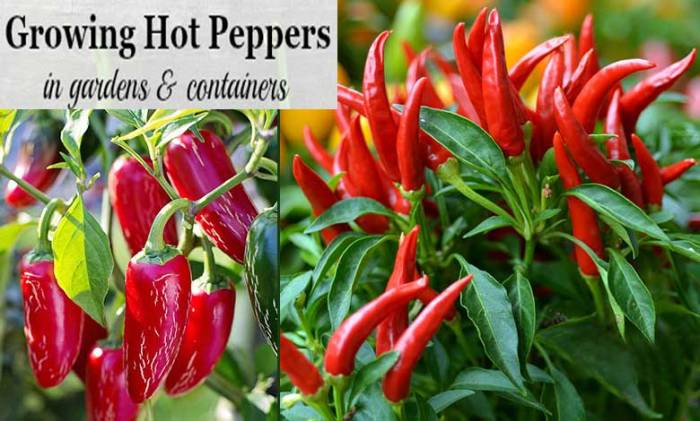
The moment you’ve been waiting for has arrivedyour hot peppers are ready to harvest! But how do you know when they’re at their peak? And what’s the best way to store them to enjoy their fiery flavor for as long as possible?
Read on to discover the secrets to harvesting and storing your hot peppers like a pro.
Signs of Ripeness
The key to harvesting hot peppers at their peak is recognizing the signs of ripeness. Hot peppers, like many fruits, undergo a transformation in color and texture as they mature. While the specific colors and textures vary depending on the pepper variety, here are some general indicators:
- Color Change:As peppers ripen, they often transition from green to vibrant hues like red, orange, yellow, purple, or even brown. The specific color of ripeness is unique to each pepper variety.
- Texture:Ripe peppers become firmer and more plump, while unripe peppers tend to be softer and less vibrant.
- Flavor and Heat:The flavor and heat intensity of hot peppers also intensify as they ripen. While the exact level of heat varies based on the pepper variety, generally, the hotter the pepper, the longer it takes to ripen.
Harvesting at the Optimal Time
The optimal time to harvest hot peppers is when they’ve reached their peak ripeness, as this is when they’ll have the most flavor and heat. Here’s how to ensure you’re harvesting at the right time:
- Check for Color Change:Observe the pepper’s color and compare it to the mature color of that specific variety. If you’re unsure, you can always research the pepper’s characteristics online or consult a gardening guide.
- Assess Texture:Gently squeeze the pepper. It should feel firm and plump, not soft or mushy. If it’s too soft, it may be overripe.
- Taste Test:If you’re unsure, you can always taste a small piece of the pepper to gauge its ripeness. However, be cautious with very hot peppers, as even a small taste can be intense!
Storing Fresh Hot Peppers
Once you’ve harvested your peppers, proper storage is crucial to maintain their freshness and flavor. Here are some methods for storing fresh hot peppers:
- Refrigeration:This is the most common method for storing fresh hot peppers. Simply wash the peppers and place them in a plastic bag or airtight container in the refrigerator. They should last for several weeks.
- Freezing:Freezing is another excellent way to preserve hot peppers. Wash and dry the peppers thoroughly, then chop them into desired sizes. Place the chopped peppers in a freezer-safe bag or container and freeze for up to six months.
Drying Hot Peppers
Drying hot peppers is a traditional method of preserving them for long-term storage. Dried peppers can be used in various dishes, from sauces and powders to chili flakes. Here’s how to dry hot peppers:
- Air Drying:This method involves stringing the peppers together and hanging them in a dry, well-ventilated area. It can take several weeks for the peppers to dry completely.
- Oven Drying:This method is faster than air drying. Preheat your oven to the lowest setting, typically around 170°F (77°C). Place the peppers on a baking sheet lined with parchment paper and dry for several hours, checking periodically to prevent burning.
- Dehydrator:Using a food dehydrator is the most efficient method for drying hot peppers. Follow the manufacturer’s instructions for drying time and temperature.
Recipes and Uses
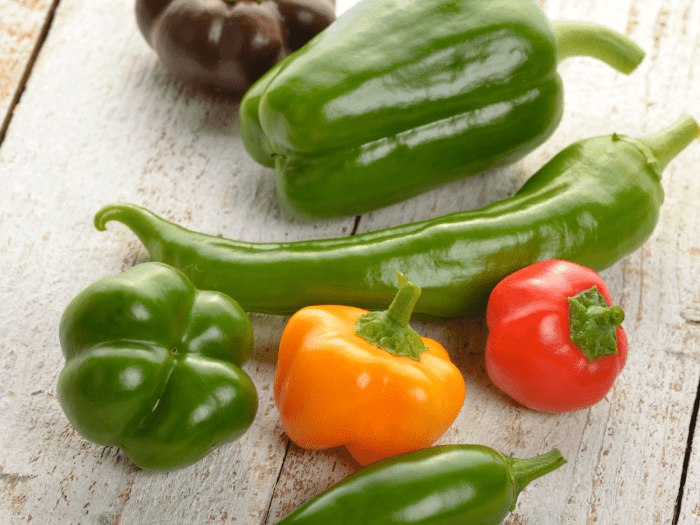
Hot peppers, with their vibrant colors and intense flavors, add a fiery kick to a wide range of dishes. Their versatility extends beyond just adding heat; they can also provide depth, complexity, and a unique dimension to your culinary creations.
From spicy salsas to flavorful sauces and savory chilis, the possibilities are endless.
Hot Pepper Variety Chart
This table provides a glimpse into the diverse world of hot peppers, highlighting their Scoville Heat Units (SHU) ratings, flavor profiles, and common culinary uses.| Pepper Variety | SHU Rating | Flavor Profile | Culinary Uses ||—|—|—|—|| Jalapeño | 2,500
8,000 | Fruity, slightly sweet, with a lingering heat | Salsas, chilis, stuffed peppers, pickled peppers |
| Habanero | 100,000
350,000 | Citrusy, fruity, with intense heat | Hot sauces, jerk seasoning, Caribbean dishes |
| Ghost Pepper | 855,000
1,041,427 | Smoky, fruity, with extreme heat | Extreme hot sauces, spicy challenges |
| Scotch Bonnet | 100,000
350,000 | Sweet, fruity, with moderate heat | Caribbean dishes, jerk seasoning, hot sauces |
Recipes Featuring Hot Peppers
Hot peppers are the stars of many delicious dishes, adding a fiery punch and unique flavor profiles. Here are a few recipes that showcase the versatility of these fiery fruits.
Spicy Mango Salsa
This vibrant salsa bursts with fresh flavors and a delightful kick. Ingredients:* 1 ripe mango, diced
- 1/2 red onion, diced
- 1/2 cup chopped cilantro
- 1 jalapeño pepper, seeded and finely chopped (adjust to your heat preference)
- 1 lime, juiced
- 1 tablespoon olive oil
- Salt and pepper to taste
Instructions:
- Combine all ingredients in a bowl and mix well.
- Taste and adjust seasoning as needed.
- Serve immediately or chill for later.
Homemade Hot Sauce
This recipe allows you to customize your hot sauce with your favorite peppers and spices. Ingredients:* 1 cup chopped hot peppers (your choice)
- 1/2 cup white vinegar
- 1/4 cup water
- 1 tablespoon salt
- 1 teaspoon garlic powder
- 1/2 teaspoon onion powder
- 1/4 teaspoon black pepper
Instructions:
- Combine all ingredients in a blender and blend until smooth.
- Pour the mixture into a sterilized jar and seal tightly.
- Let the hot sauce ferment in a cool, dark place for 2-4 weeks, shaking occasionally.
- Strain the hot sauce through a cheesecloth or fine-mesh sieve to remove any solids.
- Store in the refrigerator for up to 6 months.
Spicy Chili
This hearty chili is packed with flavor and a satisfying kick. Ingredients:* 1 pound ground beef
- 1 onion, chopped
- 2 cloves garlic, minced
- 1 (15-ounce) can black beans, rinsed and drained
- 1 (15-ounce) can kidney beans, rinsed and drained
- 1 (15-ounce) can diced tomatoes, undrained
- 1 (15-ounce) can tomato sauce
- 1 tablespoon chili powder
- 1 teaspoon cumin
- 1/2 teaspoon cayenne pepper
- 1/2 teaspoon salt
- 1/4 teaspoon black pepper
- 1/2 cup chopped jalapeño peppers (adjust to your heat preference)
Instructions:
- Brown the ground beef in a large pot over medium heat. Drain off any excess fat.
- Add the onion and garlic to the pot and cook until softened, about 5 minutes.
- Stir in the black beans, kidney beans, diced tomatoes, tomato sauce, chili powder, cumin, cayenne pepper, salt, and black pepper.
- Bring to a boil, then reduce heat and simmer for 30 minutes, stirring occasionally.
- Stir in the jalapeño peppers and simmer for another 10 minutes.
- Serve hot with your favorite toppings, such as shredded cheese, sour cream, or avocado.
Benefits of Incorporating Hot Peppers into a Diet
Hot peppers offer more than just a fiery kick; they also provide several health benefits.* Antioxidant Power:Hot peppers are rich in antioxidants, which help protect your cells from damage caused by free radicals.
Pain Relief
Capsaicin, the compound responsible for the heat in peppers, has been shown to have pain-relieving properties.
Metabolic Boost
Some studies suggest that capsaicin can help increase metabolism and promote weight loss.
Improved Digestion
Hot peppers can stimulate digestion and help relieve constipation.
Heart Health
Capsaicin may help lower blood pressure and improve cholesterol levels.
Remember to start with a small amount of hot peppers and gradually increase your intake to adjust your tolerance.
Closing Summary: How To Grow Hotter Peppers
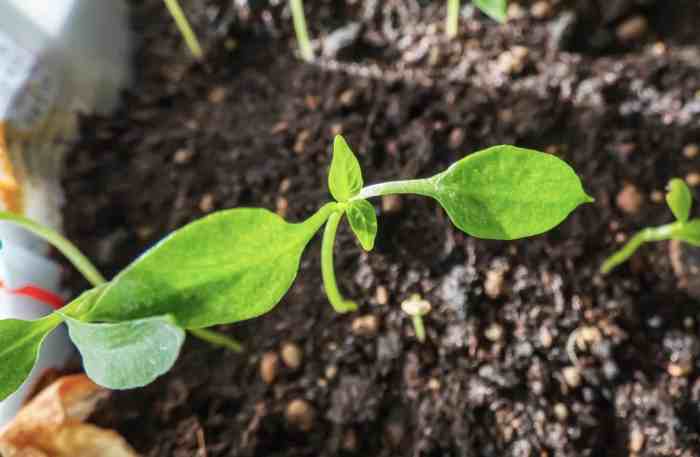
With a little knowledge, patience, and a touch of fire, you can grow hotter peppers that will tantalize your taste buds and impress your friends. So, go forth, embrace the heat, and enjoy the rewarding journey of cultivating your own fiery garden.
Remember, it’s not just about the spice, it’s about the journey and the satisfaction of growing your own.